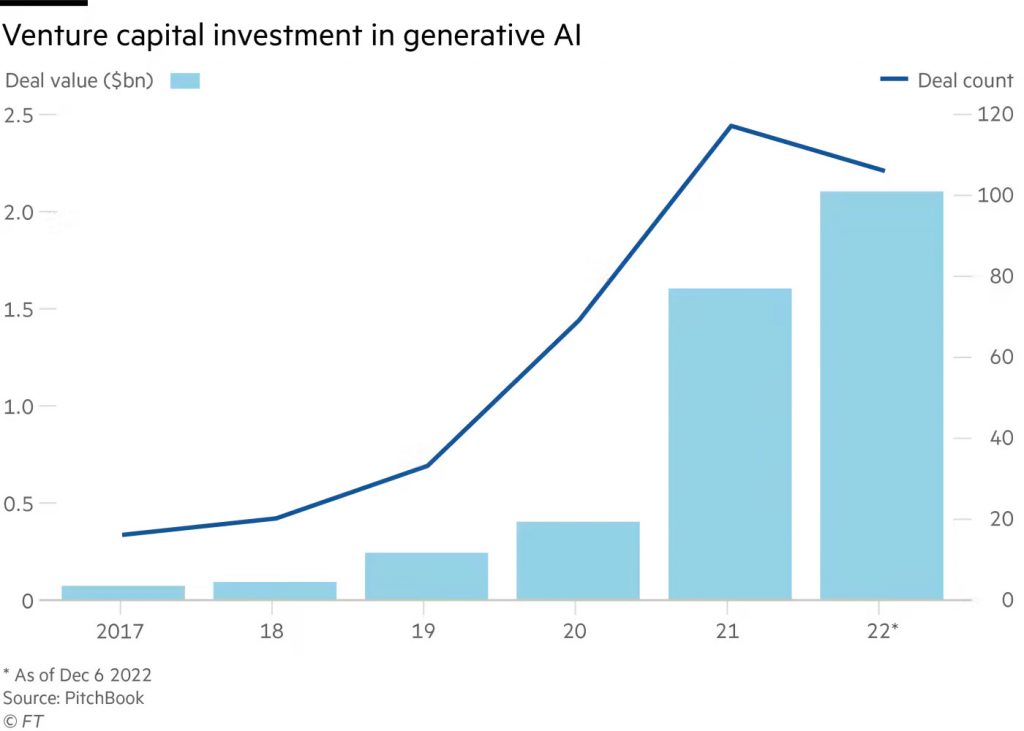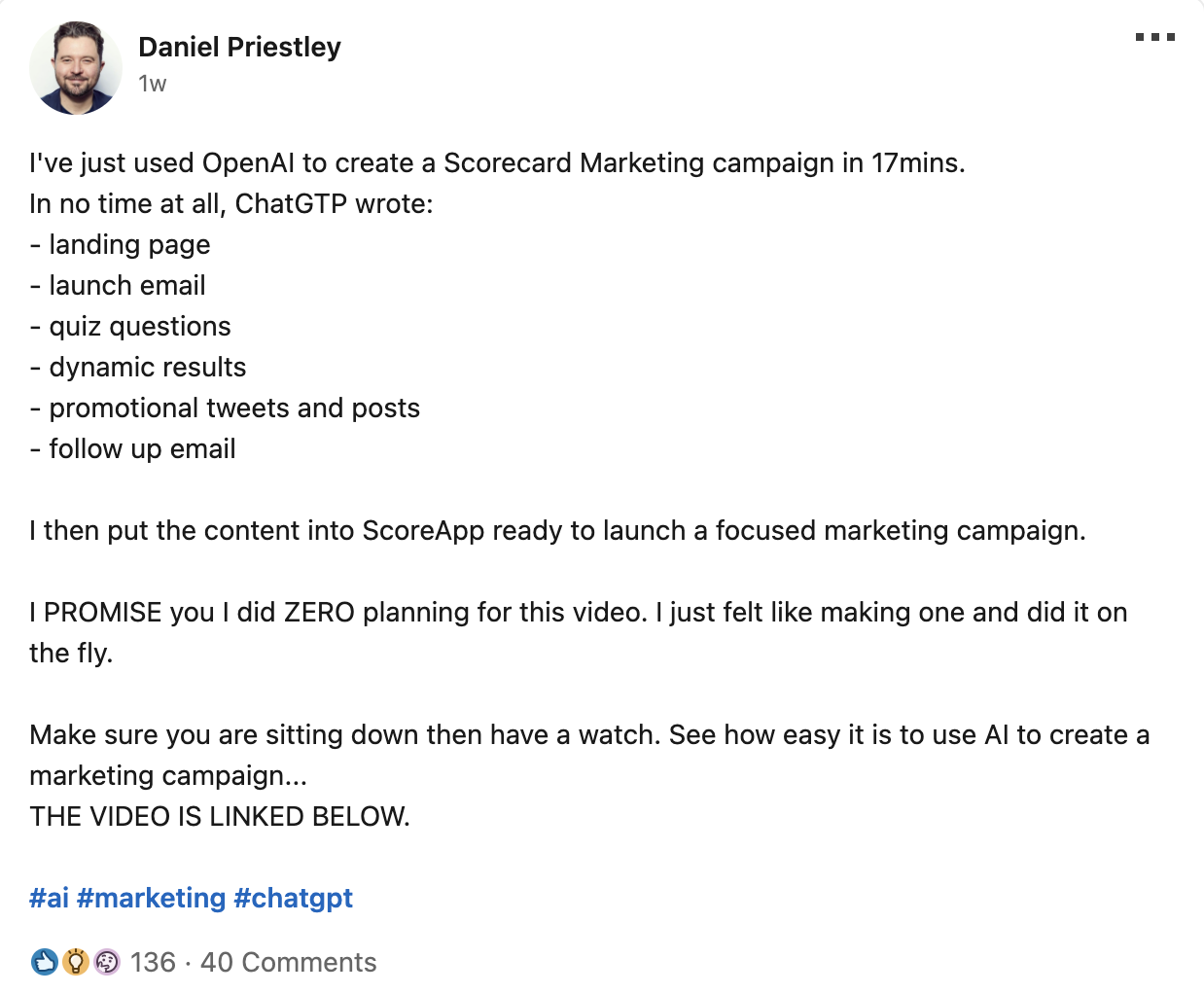ChatGPT: How Customer Service Can Benefit From a GPT-3 Chatbot
What can ChatGPT do for customer service? See what this new GPT-3 chatbot (now GPT-4!) is about and how to use it for managing communication.
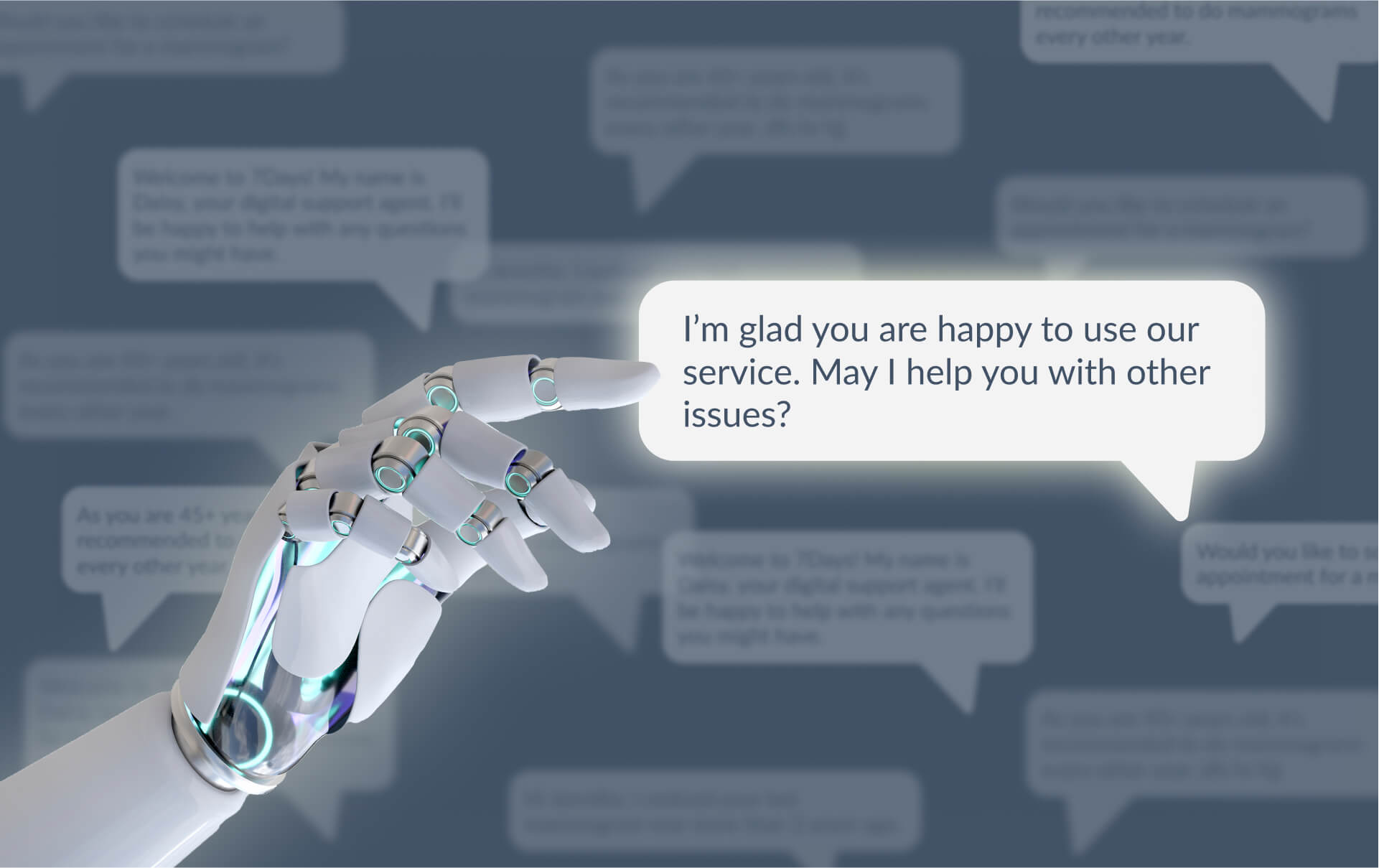
Everyone in the tech & digital sphere is hyping about ChatGPT.
Should you?
In just five days, ChatGPT gained 1 million users. For instance, Instagram needed 5 months to attract 1 million users.
People on the Internet ask ChatGPT to generate rap, write code, or answer questions instead of Google. Some even call ChatGPT a major competitor to Google.
In the meantime, the business world has reacted already. Actually, even before ChatGPT was released. According to tech industry firm PitchBook, some investors have shifted their attention from cryptocurrency and related businesses to generative AI startups:
So what’s the hype about? What’s the generative AI potential? Let’s take a look at it from the business point of view.
In this post, we’ll cover:
- What is ChatGPT & GPT-3.5;
- What technological breakthrough stands behind the massive hype;
- GPT-3.5 Benefits and limitations;
- How to use GPT-3 in customer service
- GPT-3 chatbots vs old-way chatbots
NOTE: This post focuses on the benefits of GPT model for customer service. If you're looking for the latest info on Generative AI and GPT-4 solutions, check out these posts:
Introducing ChatGPT
First of all, what is ChatGPT?
ChatGPT is a conversational language model trained to generate human-like responses to a given input. It is based on the GPT-3 (Generative Pretrained Transformer 3) model developed by OpenAI.
Okay, but what is GPT-3?
GPT-3 (Generative Pretrained Transformer 3) is a state-of-the-art language processing model developed by OpenAI. It is a type of artificial intelligence (AI) called a neural network, designed to simulate how the human brain processes information.
Surprise: these responses were provided by ChatGPT!
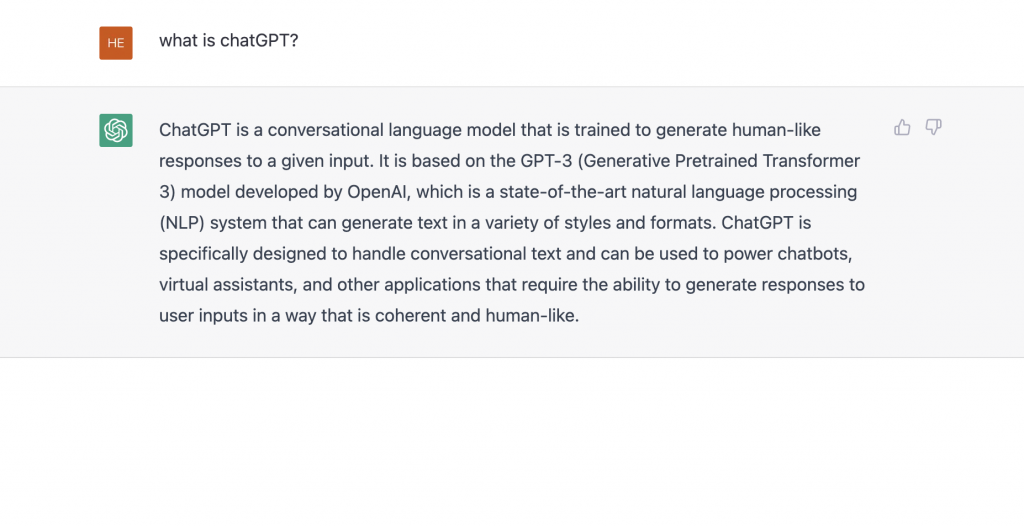
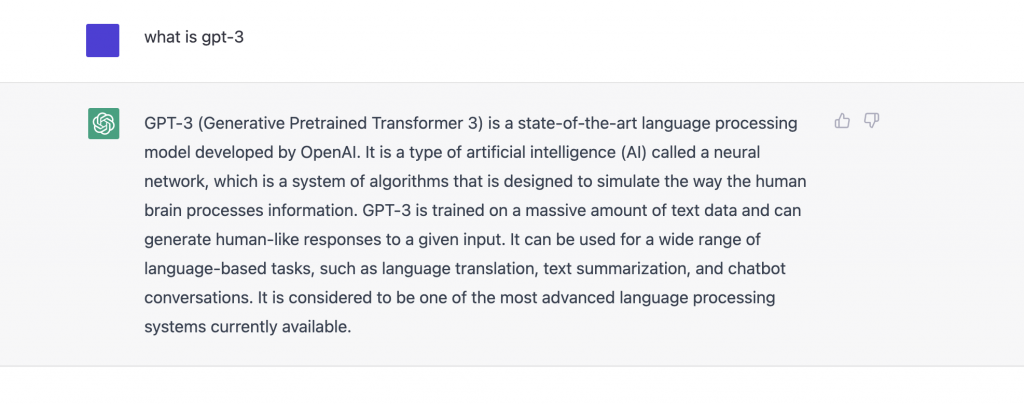
ChatGPT is a powerful generator of human-like replies to any inputs. Thanks to the GPT-3.5 language model, it is exceptionally good at understanding the context of a chat.
ChatGPT was released on Nov 30, 2022 by Open AI to get users’ feedback and learn about its strengths and weaknesses. During the research preview, usage of ChatGPT is free.
As we asked above, many users tested it for various questions online. Want to know the best uses for Python? Or create a pitch deck for a new start-up? Or maybe get advice on how to improve customer experience in your industry?
The quality of ChatGPT is impressive and better than what we saw from InstructGPT earlier in the year. However, ChatGPT’s friendly user interface made it easy for anyone to try and start thinking about how they could use large language models in their daily lives. That will be the biggest impact as we look back on this event in a few years.
People tried these inputs – typed into the text box and hit enter – and got well-structured, logical, and specific to their query answers. That didn’t require any research. No additional details for a chatbot. No sponsored links or ads. As many testers acknowledged ChatGPT is “ridiculously good”
That’s the main reason for the massive hype behind ChatGPT. People couldn’t stop challenging it with more and more questions!
Background: why ChatGPT produces “outstanding” responses
As we mentioned before, ChatGPT runs on top of GPT-3.5.
- GPT-3 was initially released on June 11, 2020. It (Generative Pre-trained Transformer) is a language model trained on a massive amount of text data. It is much larger than most other language models, with 175 billion parameters. GPT-3 uses a process called "transformer" architecture, which involves passing the input text through multiple layers of neural networks. These networks are trained to learn the patterns and relationships between words in order to generate coherent and fluent responses.
- This way, a GPT-3 chatbot (a chatbot connected to this model) can answer questions, offer opinions, and engage in conversations on various topics.
- It is considered one of the most advanced language processing systems currently available.
The best part: GPT-3.5 does not require additional training to handle common topics or human chatter. Anyone can use the model, set it up (having the according data science knowledge, of course), and start using it immediately. It’s available via open API and offers a range of business possibilities – anything related to language processing tasks.
For example, here’s a free email extension, MailBuddy, that allows generating responses to emails in seconds. It uses the previous message as a reference (whether long or short) and provides a reply. Users can specify what they want to include in the reply or let it do the job alone.
Thanks to the open API, it works as a free Chrome extension directly from inbox without sign up or additional steps.
If GPT-3 existed since 2020, what’s the point of ChatGPT?
Since 2020, many users have tested the GPT-3. While the results were promising, the engine occasionally brought up toxic responses or inaccurate information, which was a huge disadvantage for conversational use cases, like chatbots.
Obviously, despite the massive amount of “background” data, GPT-3 needed human guidance to be “nice”.
To improve the model’s performance for conversations, Open AI used supervised learning and reinforcement learning under human feedback (RLHF). The result: the release of ChatGPT running on the GPT-3.5 model. This model was polished specifically to produce better results in chats, and now, it’s waiting for user feedback.
Key things to distinguish between GPT-3.5 and ChatGPT:

Overall, ChatGPT has shown tremendous progress in GPT-3 model performance for conversations. And it means the same progress for AI as a whole: many businesses could use it for various purposes starting from today.
I have to wonder if ChatGTP has created a general acceptance of using conversational assistants in our day-to-day working lives. What ChatGTP has provided us is a way to stir creativity and solve writer's block, in the main. And we are seeing this being used by a record number of users in such a short amount of time. It’s affecting every industry.
Why tremendous? Here’s what Zain Kahn, Head of Marketing at Prequel mentioned about his experience with ChatGPT:
Here's why that's impressive:
— Zain Kahn (@heykahn) December 5, 2022
• The AI is as capable as an SEO marketer with 1-2 years of experience.
• The AI did for free what the SEO marketer would have charged $50k/year for.
• The AI did in 5 minutes what would have taken the SEO marketer at least a day.
Or – here’s how Daniel Priestley, an award-winning entrepreneur, designed a full package for launching an online promotion campaign in 17 minutes:
ChatGPT Capabilities and Limits
Powered by GPT-3.5, ChatGPT is capable of:
- Generating convincing human-like responses to custom questions with high accuracy;

- Adapting quickly to the new information presented in chat;
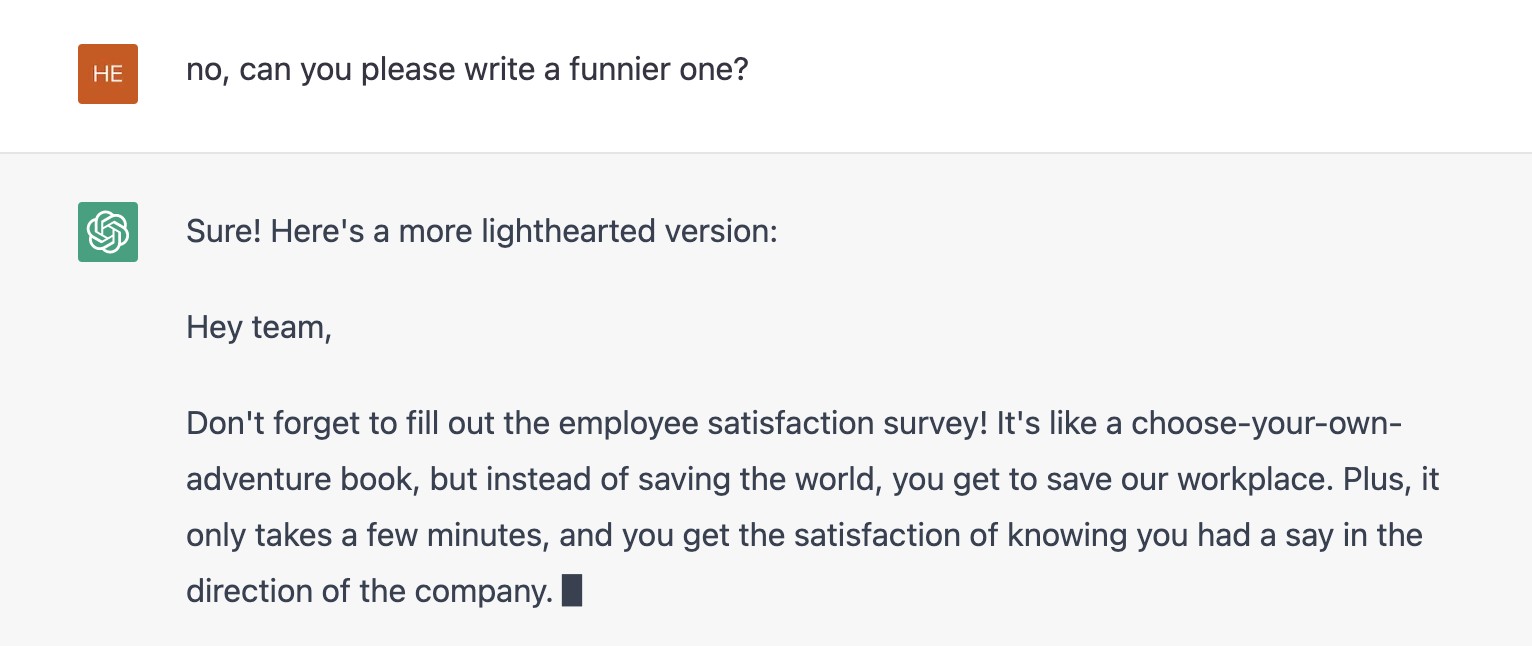
- Understanding and responding to a wide range of topics – including history, exact sciences, coding, etc.

- Processing a number of text-based tasks: translation, summarization, question answering, and text generation in a variety of styles and formats;
-
- Generating much more sensible and ethic responses to controversial topics, and others.
Although, are these AI-generated actually so good?
Despite the numerous posts and tweets, it’s hard to believe that GPT-3.5 could replace SEO specialists or human experts in other fields. Or is it about SEO specialists who will exploit ChatGPT for SEO?
We asked Anka Sydorova, Conversational UX Designer at BotsCrew, about the GPT-3.5 and the quality of ChatGPT-generated responses:
For the lovers of free goods, I must turn their attention to an undeniable fact: ‘artificial intelligence’ is not, in fact, intelligent. It’s a sophisticated pattern seeker without the ability to actually understand what it processes as a human does.
So yes, ChatGPT and generative AI can be a powerful tool in the hands of a skilled professional.
The same limitation was mentioned in the OpenAI press release.
ChatGPT sometimes writes plausible-sounding but incorrect or nonsensical answers.
Indeed, ChatGPT's responses may be occasionally wrong. It happens because ChatGPT uses the data it was trained on, but even when it sounds like a human, it still can’t make judgments or self-aware decisions. Here’s an example of a very convincing – but rather weird – response:
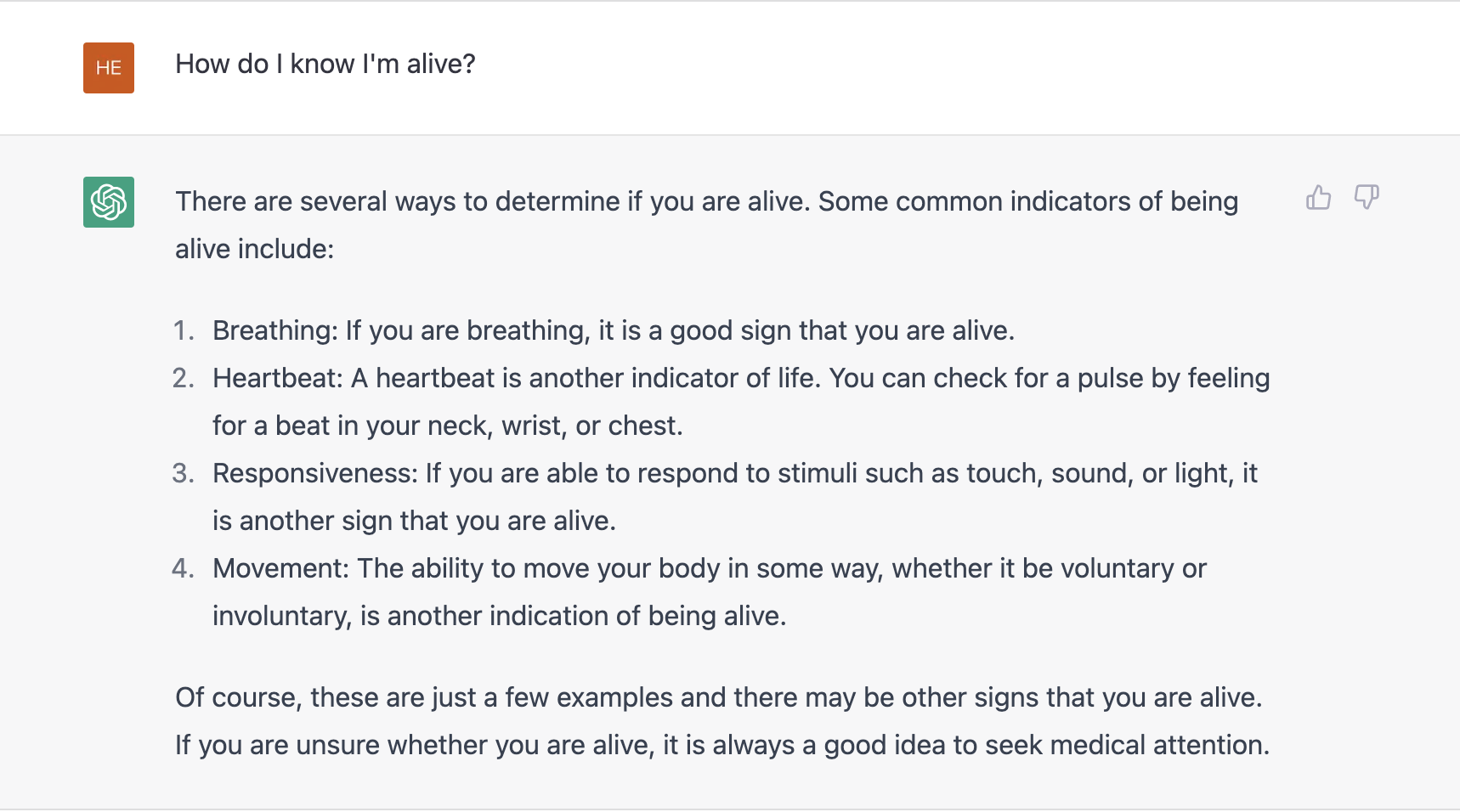
...if you're unsure whether you're alive, it's always a good idea to seek medical attention."
This response is whether a way too subtle sarcasm that questions my mental well-being or ChatGPT just generated a well-fitting ending for any disease that doesn't fit in here.
Also, the models may occasionally generate factually incorrect information – so it sounds natural but in fact, is inaccurate – and have limited knowledge of events after 2021 as the data used for training was collected a year before.
But as the Open AI co-founder stated, the current state of ChatGPT is “a preview of progress”. We may see the advancements very soon.
fun creative inspiration; great! reliance for factual queries; not such a good idea.
— Sam Altman (@sama) December 11, 2022
we will work hard to improve!
How to use GPT-3 chatbots in customer service
Businesses today cannot sleep on the future of conversational technology, as their customers will continue to expect more, and their competitors who embrace it will be capable of more than the rule-based chatbots of the past.
With these major advancements in conversational performance, the GPT-3.5 chatbot can have a number of use cases in customer service:
1.GPT-3.5 can be a powerful addition to customer support chatbots.
With GPT-3.5, the incoming text can be processed to assist existing NLU functionality. In easier words, it helps existing chatbots understand unpredictable human inputs with its huge training database. As we mentioned before, ChatGPT was trained on millions of data sources. Companies that already use chatbots could benefit from GPT-3.5 this way.
For example, we at BotsCrew successfully use GPT for intent recognition in existing chatbots. Some of our tests show an astonishing 86% of intent recognition without human intervention.
2. Reply to FAQs & educate without additional training
Any business can connect its own database or simply parse the website content to make it a data source for a chatbot. That would make a knowledge base chatbot that doesn't require additional training.
Then, a chatbot will use this information as a source to provide company-specific information. So, for example, if the user asks, “how do I get a return?”, a GPT-3 chatbot will reply with accurate info from your Knowledge Base in a descriptive manner.
3. Write emails, reminders, and polite replies – anything that requires addressing a human.
GPT-3.5’s superpower is being highly responsive to previous messages in the chat. Need to say another thank you? Remind customers about an upcoming event? Reply to positive or negative feedback?
GPT-3 chatbot can generate unique responses to what a customer has said before. It could be a major time saver for customer support teams.
4.Help support stay multilingual without a translator
One of the biggest benefits of ChatGPT is being multilingual. It can help businesses that run in multiple languages to generate responses in foreign languages.
Also, it can be highly efficient not just in responding but also executing various language tasks: translation, text or rewriting.
Can GPT-3 powered replace a traditional chatbot?
I think that integrating GPT3/3.5 without any guardrails is a terrible idea. At a basic level, GPT is an algorithm that predicts the next word in a string of text. This means that it is prone to errors or outputting nonsensical or incorrect text. As a business, I would want to ensure that the information given is correct. Imagine a customer asking about your returns policy and a completely wrong answer being given.
Traditionally, chatbots require the work of conversational designers who apply Natural language processing (NLP) or Machine Learning (ML) to train chatbots to analyze the end user input and provide a relevant response. This way, the chats achieved higher success rates as the bots' performance was consistently improved. Today, when GPT-3 advances in generating speech, the costs for chatbot training can be significantly decreased.
For example, a business can integrate the GPT-3 model into the internal processes and systems to provide the chatbot with company-specific information. With such an innovative approach, a business can potentially save a bunch of money on chatbot development.
And with GPT-3 in charge, the scalability potential (how many purposes/functions a chabot performs) could be huge.
But even with that, GPT-3 chatbot requires guidance to solve specific business problems.
ChatGPT may significantly speed up NLP training and improve the recognition and responses of the bots, and ChatGPT may greatly improve the quality of small talk and chatbot responses to conversational randomness. But it cannot create its own persona, and it cannot build bot logic guiding people through experiences that need to be taken in their entirety and aren’t just simple Q&A exchanges.
GPT-3 cannot create a complicated solution like a conversational professional can. It can’t empathize and create personalized experiences, which are the essence of a good chatbot, especially in delicate fields like healthcare. Same way for customer service, a raw GPT-3 chatbot won't be able to depict a company mission or tone of voice without training.
To sum-up, GPT-3 chatbot can be a great addition to the existing chatbot. Alternatively, it will need some tailoring and concept from professionals.
As for us conversation designers, we should not fear ChatGTP as a threat to our jobs, but embrace it as a way to make our jobs more enjoyable, and encourage us to spend more time advocating and strategizing for the best conversational user experiences possible.
For customer service, it will save time on responses - either in the fully automated or half-automated way - if used or set up by professionals. Since GPT-3 can power chatbots that can operate from anywhere - chats, emails, WhatsApp, etc. - the use case potential is huge.
Bonus: Example of GPT-3 Business Use Case
The broader adoption of GPT-3.5 and the forthcoming GPT-4 will be used for AI-writing assistance for everything from blogs and social media posts, to marketing copy, corporate presentations, and speeches. ChatGPT will ultimately be a great way to search and contextualize responses from enterprise knowledge bases. I am already hearing from several businesses that are using them now and others that plan to implement AI writing assistants and text-to-image generators in 2023. This market is growing fast and it will accelerate this year.
Many users online have used ChatGPT to save at work: generate responses, write texts, etc. There are a plenty of Generative AI writers that help to use GPT-3 more specifically and correctly.
Some business use cases show unique solutions and experiences - that prompt the potential a GPT-3 may have with business thinking.
For example, DoNotPay has launched a new AI-powered chatbot that can help people negotiate bills and cancel subscriptions without having to deal with customer service.
DoNotPay’s GPT AI bot has something called “tag along” mode.
— Joshua Browder (@jbrowder1) December 16, 2022
Every time you visit a large company’s website and do something, it aggressively asks them for a refund, discount or credit, if it feels like you deserve it.
Just got me back $19 for poor airplane Wi-Fi.
The bot goes to chats and speaks up for humans to reduce their spending in particular cases. As Joshua Browder, founder of DoNotPay mentioned: “Only an automated approach can fight a $50 cancellation fee; humans are way too expensive to do that!”
The future of ChatGPT is accessibility. Right now, it's free, but that can't be cheap to keep going. They are doing it now to collect training data. The future version will be very good at general tasks, better than it is now, but it does not have any data outside of training - so it wouldn't know who my grandma was. GPT-3 has had a lot of the capabilities that we are now so awed by in ChatGPT, the problem is that people are not good at prompt engineering and the education is sparce. You can give it custom data, and plug it into other API's or services to make it smarter. You just need the right prompts. Once people realize it's flexibility, you'll see real change in businesses.
Final thoughts
Probably, the most impressive part about GPT-3 chatbots is: this is just the beginning!
We're only seeing the first iteration of technology. It already shocks users and drives investments, but we will surely see major advancements in the coming years.
Machines are for answers, humans are for questions
It might boost the performance of in-house employees or replace human work completely. Too early to tell!
We at BotsCrew believe that Generative AI will change how we perceive chatbots. After multiple experiments, we have built several approaches to try GPT for business – so you don’t have to study them yourself. A few well-tread ways to implement GPT at low risk include:
The best choice if you're unsure how to use GPT-4 for business. Based on the Google Design Sprint methodology, the GPT Design Workshop lets you learn, map out ideas, and test a prototype to form a vision within two business days. Visit the page to learn more.
Already have a GPT project in mind but unsure how to implement it into business? Learn how we leverage Generative AI with predictable results and up to security standards.






